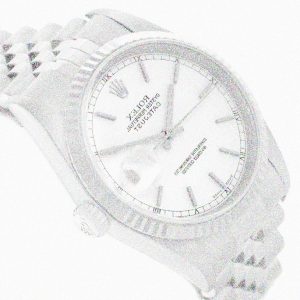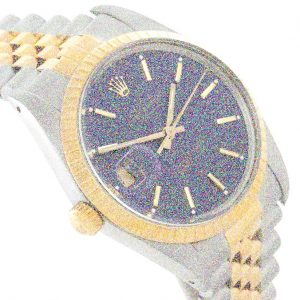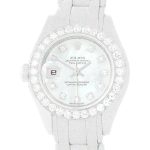Rolex Sea-Dweller vs. Rolex Submariner: Which One Should You Choose?
As a watch enthusiast, I’ve often found myself caught in the debate between the Rolex Sea-Dweller and the Rolex Submariner. Both are iconic models with rich histories and a loyal following, but the nuances between them can greatly influence your decision. Let’s dive into the specifics so you can determine which watch suits your lifestyle and preferences better.
Key Differences Between the Rolex Sea-Dweller and Submariner
Case Thickness and Overall Wearability
The super clone Rolex Sea-Dweller typically sports a thicker case compared to the Submariner, which is something I’ve noticed makes a difference in overall wearability. The Sea-Dweller’s case is about 43mm wide and 15.5mm thick, designed to withstand greater depths. In contrast, the Submariner is usually around 40mm wide and 13mm thick, making it a bit more subtle on the wrist. I personally appreciate the Sea-Dweller’s robust presence, but I also understand that some might prefer the understated elegance of the Submariner for everyday wear.
The Helium Escape Valve: Does It Matter?
One of the standout features of the Sea-Dweller is its helium escape valve, designed for saturation diving. This feature allows helium gas to escape during decompression, preventing damage to the watch. If you’re a professional diver or frequently engage in deep-sea activities, this valve can be a game-changer. However, for the average wearer, the Submariner’s absence of this feature may not be a dealbreaker. I find the practicality of the Sea-Dweller fascinating, but if you’re not diving to extreme depths, you might not need it.
Bezel Design: Comparing the Two Models Side by Side

When I compare the bezels, the differences become apparent. The Submariner features a unidirectional rotating bezel with a glossy ceramic insert, which not only looks stunning but is also scratch-resistant. The Sea-Dweller, while also having a unidirectional bezel, is slightly more rugged and utilitarian, often with a matte finish. For me, the Submariner’s bezel feels more refined, while the Sea-Dweller’s functional design appeals to those who appreciate a more robust tool watch aesthetic.
Bracelet and Clasp: Comfort vs. Functionality
Both models come with Oyster bracelets, but the Sea-Dweller’s bracelet is slightly heavier and feels more solid. The clasp on the Sea-Dweller also incorporates the Fliplock extension, which allows for easy adjustments over a wetsuit. On the flip side, the Submariner’s clasp is equally functional but tends to feel a tad lighter and more comfortable for daily wear. Personally, I lean towards the Sea-Dweller for its secure feel, especially when swimming or diving.
Dial Variations and What They Mean
The dials on both watches are iconic, yet they tell different stories. The Submariner typically features a more classic look with its simple hour markers and the distinctive Mercedes hands. In contrast, the Sea-Dweller often has a more technical appearance, with additional depth ratings and a date function at 3 o’clock. I enjoy the Submariner’s timeless elegance, but the Sea-Dweller’s dial captures the essence of professional diving in a way that feels purposeful.
The Everyday Wear Factor: Which Is More Versatile?
In my experience, the Submariner tends to be more versatile for everyday wear. Its slightly smaller size and classic design make it suitable for both casual and formal occasions. The Sea-Dweller, while still stylish, carries a more rugged vibe that can feel less appropriate in formal settings. If you want a watch that can transition seamlessly from boardroom to beach, I’d recommend the Submariner.
Which Watch Has the Better Water Resistance?

Water resistance is a defining feature of both the Sea-Dweller and the Submariner, but there’s a significant difference between the two. The Submariner, as a professional dive watch, boasts an impressive 300-meter (1,000 feet) water resistance, which is more than enough for recreational divers.
However, the Sea-Dweller takes things to another level, offering an astonishing 1,220-meter (4,000 feet) water resistance. This level of durability is meant for saturation divers who spend prolonged periods at extreme depths. The Deepsea variation of the Sea-Dweller even pushes that limit further, with a 3,900-meter (12,800 feet) rating.
For most wearers, the Submariner’s 300m depth rating is already overkill—after all, very few of us will ever take our watches beyond a swimming pool or the occasional snorkeling trip. But if you appreciate engineering for extreme conditions, the Sea-Dweller offers a sense of overbuilt reliability that’s hard to beat.
Design and Aesthetic Comparisons
When it comes to aesthetics, both models share Rolex’s signature Oyster case, Mercedes hands, and a unidirectional ceramic bezel, but subtle details set them apart.
1. Case Size and Thickness
The Submariner’s 40mm case has a balanced, timeless appeal that makes it an effortless choice for both casual and formal settings. It’s slim enough to slide under a cuff while maintaining a sporty, rugged look.
The Sea-Dweller, on the other hand, bulks up to 43mm, with a thicker case that adds to its presence. While this makes it feel more substantial on the wrist, it can also be less comfortable for daily wear, particularly for those with smaller wrists.
2. Cyclops Lens vs. No Cyclops
One of the more controversial design differences is the Cyclops lens over the date. The replica Submariner Date features Rolex’s signature magnified date window at 3 o’clock, making it easy to read at a glance.
Earlier versions of the Sea-Dweller omitted the Cyclops, which purists loved for its cleaner, symmetrical design. However, in recent years, Rolex introduced the Cyclops on the Sea-Dweller, sparking debate among collectors. Some feel it brings added practicality, while others believe it takes away from the tool-watch aesthetic.
3. Case Back Details
Unlike the Submariner, the Sea-Dweller features an engraved case back, a rare detail in Rolex’s lineup. This adds to its professional tool-watch character and sets it apart from the more refined Submariner.
Movement and Performance Breakdown

Both watches house Rolex’s in-house movements, designed for precision, reliability, and longevity.
- Rolex Submariner: Equipped with the Caliber 3235 (for Date models) or 3230 (No-Date models), featuring a 70-hour power reserve, Paramagnetic blue Parachrom hairspring, and Superlative Chronometer certification.
- Rolex Sea-Dweller: Uses the Caliber 3235, the same as the Submariner Date, but engineered for deeper pressure resistance. It also offers a 70-hour power reserve and Rolex’s latest Chronergy escapement for enhanced efficiency.
While both movements are exceptionally accurate, the key difference lies in the case construction—the Sea-Dweller is built to withstand higher pressure, making it a true deep-sea diving companion.
Final Thoughts: Which One Should You Choose?
If you’re torn between the Rolex Submariner knockoff and the Rolex Sea-Dweller copy watch, your choice ultimately comes down to how you plan to wear the watch.
- Go for the Submariner if… you want a versatile, everyday sports watch that transitions effortlessly between casual and formal occasions. It’s iconic, timeless, and fits well on most wrists.
- Choose the Sea-Dweller if… you want something more robust, slightly larger, and engineered for extreme diving. It’s a conversation starter and a statement piece for those who appreciate Rolex’s tool-watch heritage.
For most collectors, the Submariner is the practical choice, but if you enjoy wearing a watch that feels overbuilt for any real-world scenario, the Sea-Dweller is hard to resist.


